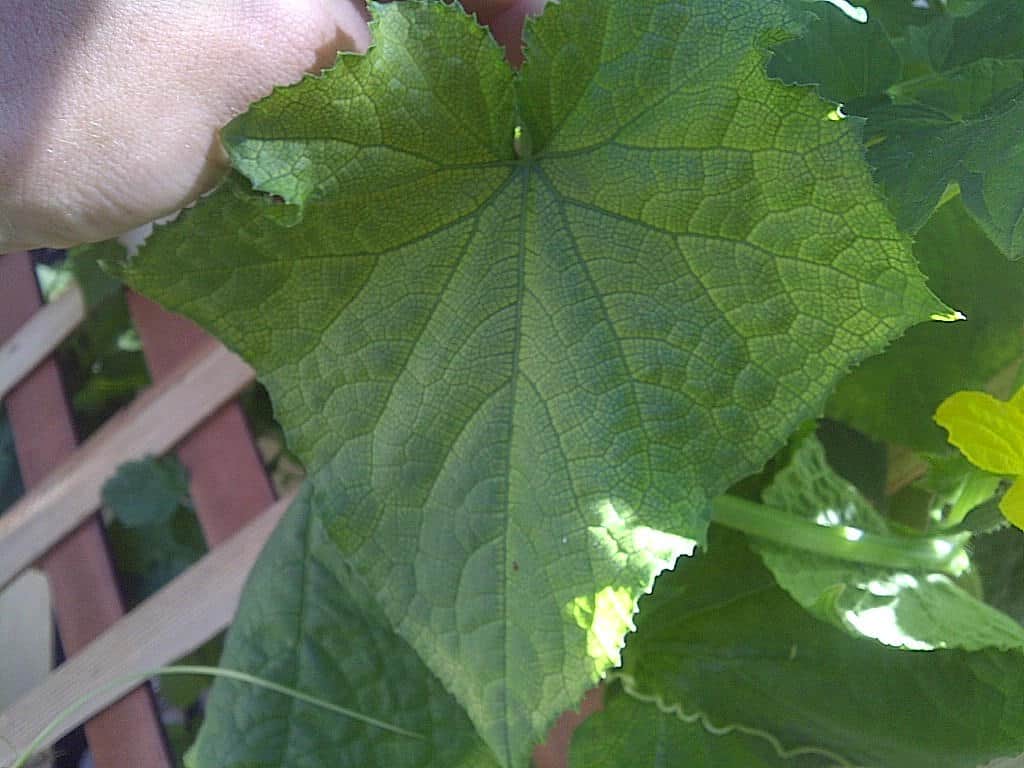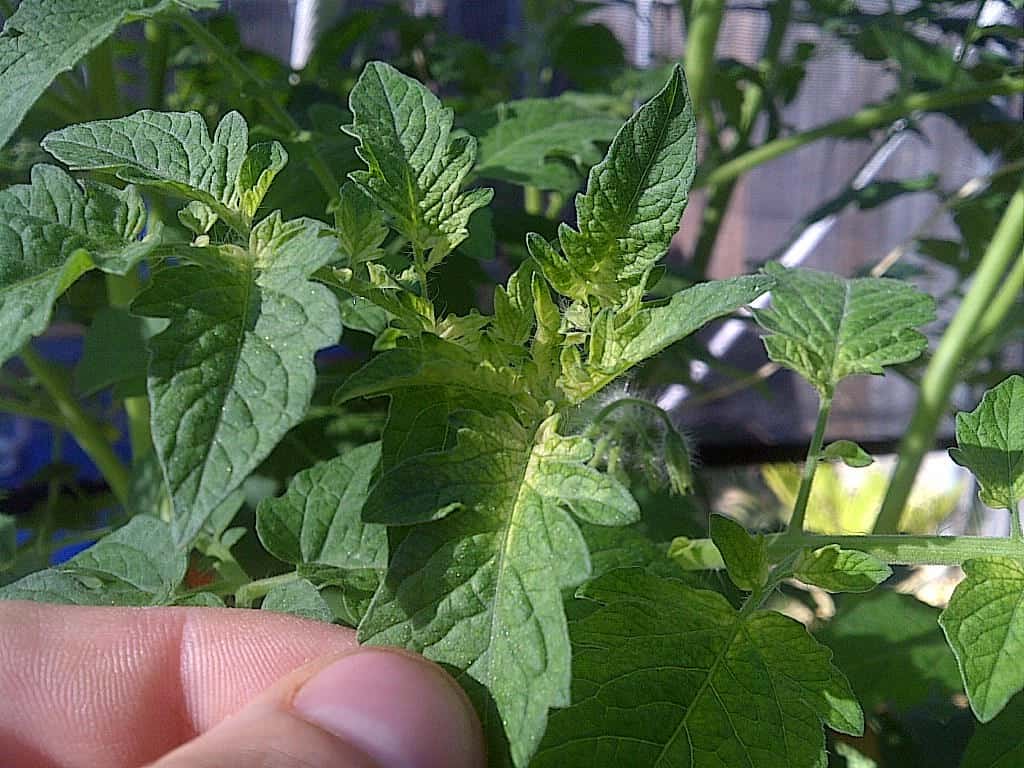Iron deficiency in tomato plants is a challenging concern among gardeners.
When the leaves of your precious crops have turned yellow, it is possible that it’s due to an iron deficiency.
The big question is: What causes this issue and what can you do about it?
Let us have a look at the common reasons why this happens to tomato plants, as well as natural ways to fix this problem.

Iron Deficiency in Tomato Plants – Why Do Your Crops Need Iron?
All plants need iron to function properly and thrive.
Many of their key functions rely on this nutrient. These include chlorophyll production, metabolism, and development.
Thus, plants will not thrive without iron. In fact, an iron deficiency in tomato plants can eventually lead to death.
With this in mind, it is important to determine what causes this problem. By doing so, you can address this concern or prevent it from happening in the first place.
4 Causes of Iron Deficiency in Tomato Plants
Iron chlorosis or an insufficient amount of iron in plants starts mildly. For instance, you may notice one leaf, specifically that of new growth turns yellow. It is also known as leaf chlorosis, or when the leaves turn yellow except for the veins that remain green.
Over time, the yellow tips move their way to the older leaves. Thus, the yellowing spreads and affects the entire plant. This is the case of a worsening condition of iron deficiency.
It is also possible that in some cases, leaf loss and weak new growths may arise.
Here are the 4 causes of iron chlorosis in tomato plants and what you can do to control this problem.
1. Excessive Clay Content in the Soil
Tomato plants thrive in sandy and loamy soil. They prefer well-draining soil to prevent too much moisture.
If your soil has a large amount of clay, iron deficiency may occur in your crops. Clay does not have an abundance of organic material. This is why the plant is unable to obtain iron from it.
Additionally, the lack of trace nutrients prevents the plant from growing well. Eventually, the leaves will start to turn yellow as an insufficient level of iron is obtained from the soi.
A practical way to address this issue is by making some changes to your soil mix. Add compost and peat moss to your soil. These organic materials provide the much-needed nutrients that your crops need.
2. Very High Soil pH Level
Another reason why iron chlorosis occurs is a high pH level in the soil. A desirable soil pH level for tomato plants is under 7. Hence, if the pH level has gotten over that number, it becomes harder to receive iron from dirt.
With this in mind, you should test the pH level in your soil before you plant. This is why it is very important to check the pH as a means of preparing for your crops. By doing so, you are setting all the right conditions for your plants to thrive.
3. Soil with High Phosphorus Content
It is common knowledge among gardeners that plants need phosphorus to develop and bear fruit.
However, having too much of it is not a good thing. In fact, a high level of phosphorus in the soil can result in leaf chlorosis.
This nutrient, when in excessive amounts, tends to block the plant’s ability to absorb iron. Over time, it can lead to the yellowing of leaves and the weakness of your crops.
Most gardeners make a mistake of feeding their crops with fertilizer that is highly rich in phosphorus. As a result, it negatively impacts the plant’s ability to take in iron.
One way to address this problem is by using a fertilizer with a reduced amount of phosphorus. I recommend that you check the label to make sure that the soil regains its balance.

4. Soggy or Compacted Soil
Lastly, let us talk about soggy soil as a cause of iron chlorosis in tomato plants.
It is not a big surprise that your watering techniques highly impact the growth or damage to your crops.
Allowing your crops to dry out spells disaster to their life. On the other hand, watering in excessive amounts is not healthy either.
Overly wet or compacted soil does not do any good to your tomato plants. Both of these conditions prevent the roots from taking up the required level of iron for growth. Your crops also have an insufficient supply of air that can affect their growth.
Soil that is often drenched in water is concerning to your crops. Thus, you will need to do something about the drainage to make sure your plants do not get soaked. This can be easy to remedy by simply adding organic matter such as peat moss, compost, and well-rotted manure.
However, it is much more difficult to reverse the problem if the culprit is compacted soil. What you can do instead, is to use iron supplements for your crops. There is soil supplement available in plant nurseries, as well as a foliar spray containing chelated iron for your plants.
These additions to the soil can provide the much-needed iron to your crops. They can also counter the effect of iron deficiency by allowing the roots to take up this precious nutrient. As a result, your plants will be able to metabolize and develop well.
Learn more about iron deficiency in plants as presented in this insightful video. It also discusses other nutrient deficiencies that tomato plants tend to undergo, as well as how to address these issues.
Bottom Line
A mild case of iron deficiency in tomato plants can be addressed quickly to resolve this issue and regain the health of your crops. This is why it is essential to understand the causes of this nutrient deficiency and what you can do to prevent or treat these. By doing so, you can ensure the health and development of your crops for an increased yield each fruit production season.